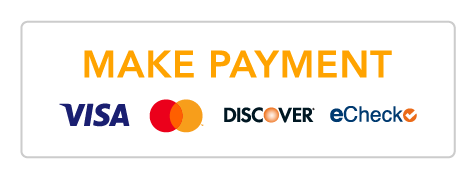We often hear clients express concerns about the complexity of tax season and the desire to minimize their tax burden. One of the most effective tools to help achieve this goal, while simultaneously building your retirement savings, is an Individual Retirement Account (IRA). Whether you’re just starting to save or looking for ways to maximize your tax efficiency, contributing to an IRA can be a smart move. Here's how it can save you money during next tax season.
Tax Deductions with Traditional IRAs
One of the immediate benefits of contributing to a Traditional IRA is the potential tax deduction. The money you contribute can be deducted from your taxable income, which can lower your overall tax liability for the year.
For example, if you contribute $7,000 to a Traditional IRA (the current annual limit for those under 50 in 2024), and you’re in the 22% tax bracket, you could reduce your tax bill by $1,430. For those over 50, the limit increases to $8,000, making the potential savings even higher.
These deductions can have a significant impact, especially for individuals nearing retirement age, as every dollar saved on taxes can help you better prepare for your future.
Tax-Free Growth in Roth IRAs
While contributions to a Roth IRA are made with after-tax dollars and don’t provide an immediate tax deduction, they offer another tax advantage: tax-free growth.
Once your money is in a Roth IRA, all earnings grow tax-free, and qualified withdrawals in retirement are not taxed. This means that the money you contribute now can grow over time without incurring additional tax burdens when you withdraw the funds later.
For those who expect to be in a higher tax bracket in retirement, or simply want to avoid taxes on their future retirement withdrawals, contributing to a Roth IRA can be a strategic move.
The Flexibility of Late Contributions
One of the often-overlooked benefits of IRAs is that you have until the tax filing deadline (typically mid-April) to make contributions for the previous year. This means that even if you haven’t made a contribution by December 31st, you can still contribute to an IRA and claim the deduction on your taxes for that year.
For example, if you find out in February or March that you owe more in taxes than expected, contributing to a Traditional IRA before the tax filing deadline can reduce your taxable income and potentially lower your tax bill. This flexibility gives you more time to maximize your tax benefits.
Lowering Your Adjusted Gross Income (AGI)
For those contributing to a Traditional IRA, the amount you contribute can also lower your Adjusted Gross Income (AGI). Your AGI is an important number because it determines eligibility for various tax credits and deductions.
By reducing your AGI, you might qualify for deductions or credits that you wouldn’t have otherwise. This is particularly beneficial for taxpayers who are close to income thresholds for certain benefits, like the Child Tax Credit or education-related credits.
Catch-Up Contributions for Those 50 and Older
If you’re 50 or older, the IRS allows you to make catch-up contributions to your IRA, increasing the contribution limit. For 2024, the catch-up contribution amount is $1,000, allowing those in this age group to contribute up to $8,000 to an IRA.
This increased contribution not only helps you save more for retirement but also provides a greater opportunity to reduce your tax burden. For higher-income earners nearing retirement, these catch-up contributions can lead to substantial tax savings while preparing for a comfortable retirement.
Compound Interest and Long-Term Tax Savings
Beyond the immediate tax benefits, contributing to an IRA helps you take advantage of compound interest—your contributions and any earnings grow over time, generating interest on top of interest.
The longer you leave your money in an IRA, the more time it has to grow, and the more tax benefits you’ll enjoy. For Traditional IRAs, your tax-deferred earnings mean that you won’t owe taxes on gains until you start making withdrawals. For Roth IRAs, your earnings grow tax-free, and you won’t owe taxes on qualified distributions in retirement.
Contributing to an IRA is a powerful tool for both tax savings and retirement planning. Whether you choose a Traditional IRA for the immediate tax deduction or a Roth IRA for future tax-free growth, maximizing your contributions can lead to significant financial benefits now and in the years ahead.
As tax season approaches, it’s a great time to review your financial strategy and consider how an IRA can help reduce your tax liability. If you’re unsure which option is best for your situation, working with a financial advisor can help you make an informed decision tailored to your needs.
If you have questions about how an IRA can fit into your overall financial plan, please reach out to a member of our team. Planning today can help you save on taxes tomorrow.
Investments are subject to market risks including the potential loss of principal invested. Past performance does not guarantee future results. This information is intended to be for illustrative purposes only and does not reflect any particular investment or investment needs of any specific investor.
*Roth IRAs - Withdrawals of earnings are tax-free after age 59½ and if the account has been open for at least five years. If you don't meet the age or account length requirements, you may owe taxes and a 10% early withdrawal penalty.


